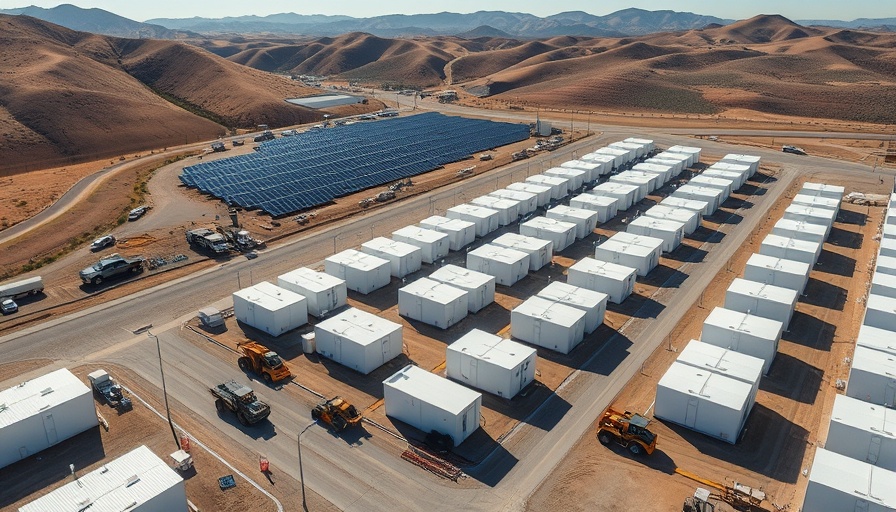
The High Stakes of Design-Build Disputes: AECOM vs. Flatiron
In a landmark case that culminated years of litigation, a federal judge in Denver ordered contracting firm Flatiron to pay AECOM $14.2 million in legal costs following a breach-of-contract lawsuit related to the expansion of the E-470 toll road in Denver. The dispute, which highlights ongoing tensions in the design-build sector of construction, underscores the complexities associated with legal agreements in large infrastructure projects.
Understanding the Case: Key Background and Details
The lawsuit between AECOM and Flatiron spanned five years and revolved around claims of unpaid design work, ultimately leading to a jury awarding AECOM $5.26 million. The case was significantly impacted by allegations from Flatiron asserting that AECOM had not met its design obligations, leading to excessive costs. Despite Flatiron’s counterclaim seeking $263.5 million, the jury found in favor of AECOM on most counts, setting the stage for the substantial legal costs incurred in court.
Judge William J. Martínez's ruling concluded that since Flatiron lost on two of three claims, it was obligated to pay AECOM's legal expenses under the subcontract clause pertaining to claims. The breakdown of fees awarded included $8.3 million in attorney costs and $5.9 million for expert witness fees. This far exceeded the initial damages sought by AECOM, showcasing the financial toll such legal battles can inflict on construction firms.
Legal Cost Analysis: Lessons for Contractors
The method used by Judge Martínez to calculate costs, termed the 'lodestar' method, highlights an important lesson for contractors in managing legal expenses. This involves analyzing the number of hours worked multiplied by a reasonable hourly rate. Discrepancies in billing, such as those that Flatiron pointed out in AECOM’s request for $16 million, raised significant questions about legal billing practices in high-stakes litigation. Attorneys’ retainers that range from $600-$700 per hour can lead to substantial liability for companies, stressing the need for clear cost management strategies.
Counterclaims and Their Impact: Understanding Risk
Flatiron's extensive counterclaim, which included demanding $260 million for alleged project delays and overruns, illustrates how cross-claims can complicate litigation. The judge's decision to allow evidence concerning Flatiron's claims against other parties provided critical insights, suggesting that a holistic view of liability can influence jury outcomes. Understanding this dynamic can aid contractors in creating risk mitigation measures, allowing them to better navigate potential disputes in their projects.
The Broader Implications of the AECOM-Flatiron Case
This case isn't just about two companies embroiled in a costly legal battle; it represents a window into the future of construction contracts, particularly concerning how designers and contractors interact on large-scale projects. With the construction industry evolving, there is a clear movement towards establishing clearer collaborative agreements that could limit future litigation risks. Implementing elements that commonly lead to disputes—like vague clauses and unclear expectations—should become a priority for both contractors and designers moving forward.
Future Predictions: Trends in Construction Disputes
As infrastructure projects become larger and more complex, the likelihood of contract disputes may grow. Construction firms might increasingly turn to alternative dispute resolution methods, such as mediation or arbitration, to reduce the legal costs imposed by protracted litigation. In addition, enhancing communication and the use of technology within project management have the potential to preempt some common disagreements that arise between contractors and designers.
Conclusion: Empowering Contractors
For professionals in the construction industry, understanding the nuances of contract law and the potential ramifications of disputes is essential. The AECOM vs. Flatiron case serves as a cautionary tale, emphasizing the need for clear contracts, diligent project management, and proactive dispute resolution strategies. By arming themselves with this knowledge, contractors can navigate their projects more effectively, potentially reducing legal exposure and improving profitability.
To stay informed about trends and legal considerations in the construction industry, join our community at ProHomeGuides today!
 Add Row
Add Row  Add
Add 




Write A Comment